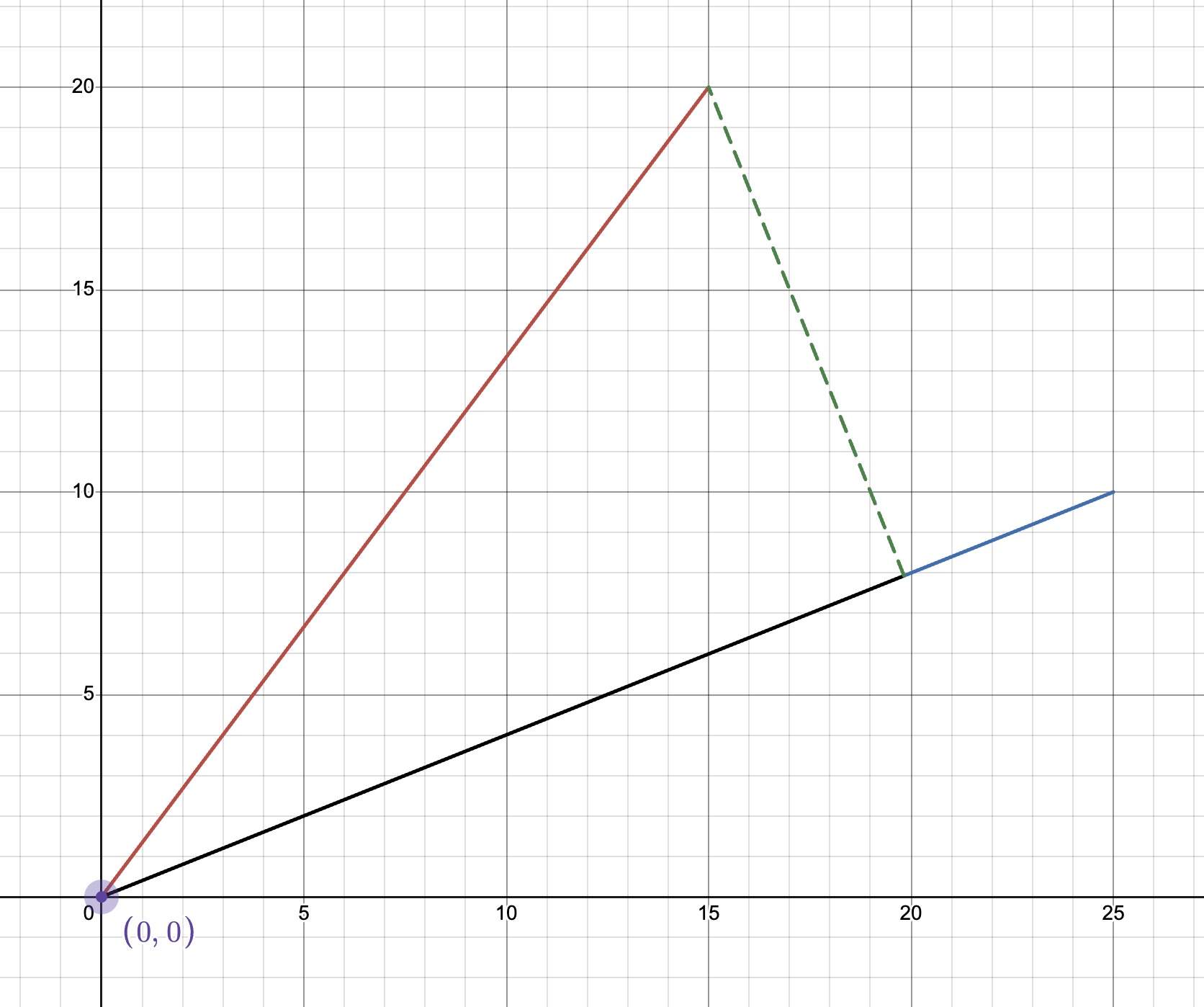Understanding Dot Product and Projection in Vectors
In this blog post, we’ll dive into two fundamental operations in vector analysis: the dot product and projection. We will explain each concept with definitions, geometric interpretations, and a practical example.
Dot Product
What Is It?
Given two vectors
\(\mathbf{u} = (u_1, u_2, \dots, u_n) \quad \text{and} \quad \mathbf{v} = (v_1, v_2, \dots, v_n),\)
the dot product (or prodotto scalare in Italian) is defined as:
Geometric Interpretation
The dot product can also be expressed in terms of the magnitudes of the vectors and the cosine of the angle (\theta) between them:
\[\mathbf{u} \cdot \mathbf{v} = \|\mathbf{u}\| \, \|\mathbf{v}\| \cos(\theta).\]• When the vectors point in the same direction, \(\cos(\theta)\) is positive and the dot product is large.
• When the vectors are perpendicular, \(\cos(\theta) = 0\) and the dot product is zero.
• When they point in opposite directions, \(\cos(\theta)\) is negative, yielding a negative dot product.
Sample Calculation
Let’s consider two vectors:
\[\mathbf{a} = (3, -4) \quad \text{and} \quad \mathbf{b} = (2, 5).\]The dot product is calculated as:
\[\mathbf{a} \cdot \mathbf{b} = (3)(2) + (-4)(5) = 6 - 20 = -14.\]This result tells us something about the directional relationship between (\mathbf{a}) and (\mathbf{b}).
Projection
What Is It?
The projection of one vector onto another helps us determine the component of one vector in the direction of the other. There are two forms of projection:
- Scalar Projection (Component):
This tells you the length of the projection (how much one vector extends in the direction of the other). For a vector (\mathbf{s}) onto (\mathbf{r}), it is given by:
Vector Projection:
\[\text{proj}_{\mathbf{r}}(\mathbf{s}) = \left( \frac{\mathbf{s} \cdot \mathbf{r}}{\|\mathbf{r}\|^2} \right) \mathbf{r}.\]
This gives you the actual vector in the direction of (\mathbf{r}) that represents the projection of (\mathbf{s}). It is defined as:Alternatively, it can be written as the scalar projection multiplied by the unit vector in the direction of (\mathbf{r}):
\[\text{proj}_{\mathbf{r}}(\mathbf{s}) = \text{comp}_{\mathbf{r}}(\mathbf{s}) \cdot \frac{\mathbf{r}}{\|\mathbf{r}\|}.\]
Geometric Insight
- Scalar Projection: Provides the magnitude (with sign) of how much of (\mathbf{s}) lies along (\mathbf{r}).
- Vector Projection: Gives the actual vector component along (\mathbf{r}).
Sample Calculation
Consider two vectors in (\mathbb{R}^2):
\[\mathbf{r} = (3, 4) \quad \text{and} \quad \mathbf{s} = (5, 2).\]Step 1: Compute the dot product
\[\mathbf{s} \cdot \mathbf{r} = (5)(3) + (2)(4) = 15 + 8 = 23.\]Step 2: Compute the norm of (\mathbf{r})
\[\|\mathbf{r}\| = \sqrt{3^2 + 4^2} = \sqrt{9 + 16} = \sqrt{25} = 5.\]Step 3: Find the scalar projection
\[\text{comp}_{\mathbf{r}}(\mathbf{s}) = \frac{23}{5} \approx 4.6.\]Step 4: Find the vector projection
\[\text{proj}_{\mathbf{r}}(\mathbf{s}) = \left( \frac{23}{5^2} \right) (3, 4) = \left( \frac{23}{25} \right) (3, 4) \approx (2.76, 3.68).\]The vector projection ((2.76, 3.68)) is the component of (\mathbf{s}) that points in the same direction as (\mathbf{r}).
Conclusion
In summary:
Dot Product:
Combines two vectors to yield a scalar. It reveals information about the magnitude of the vectors and the cosine of the angle between them.Projection:
Decomposes a vector into a component along another vector:- The scalar projection tells you the magnitude.
- The vector projection provides both the magnitude and direction in the form of a vector.
Understanding these concepts is crucial in many areas, including physics, engineering, and computer graphics, where resolving vectors into components is a common task.
Happy calculating!
